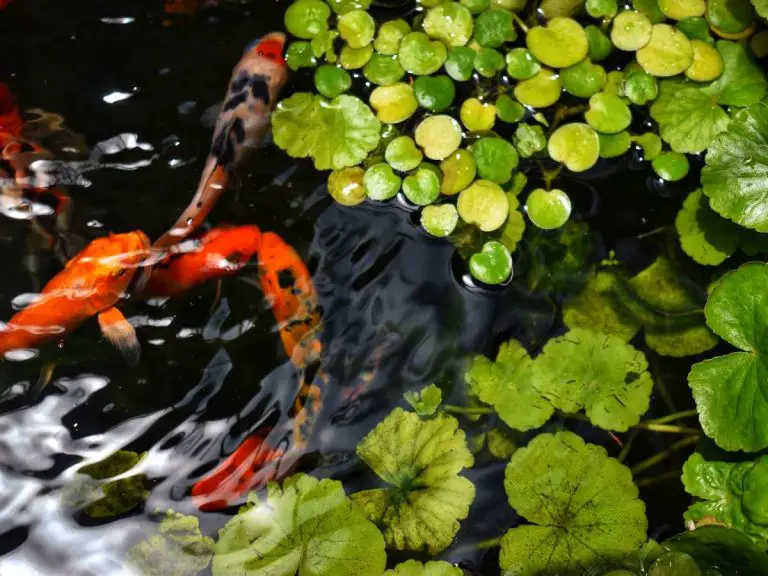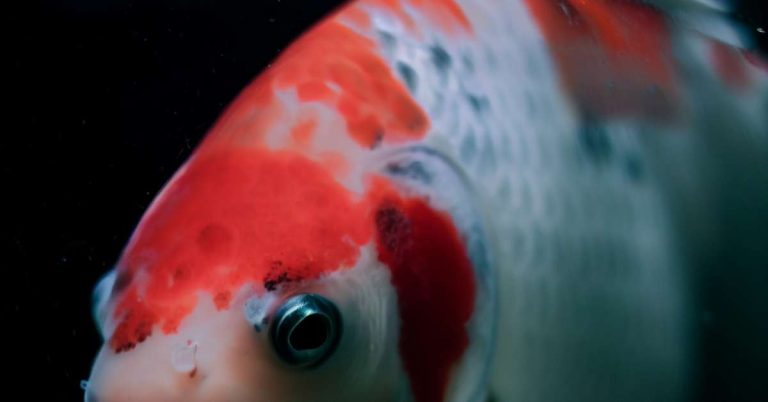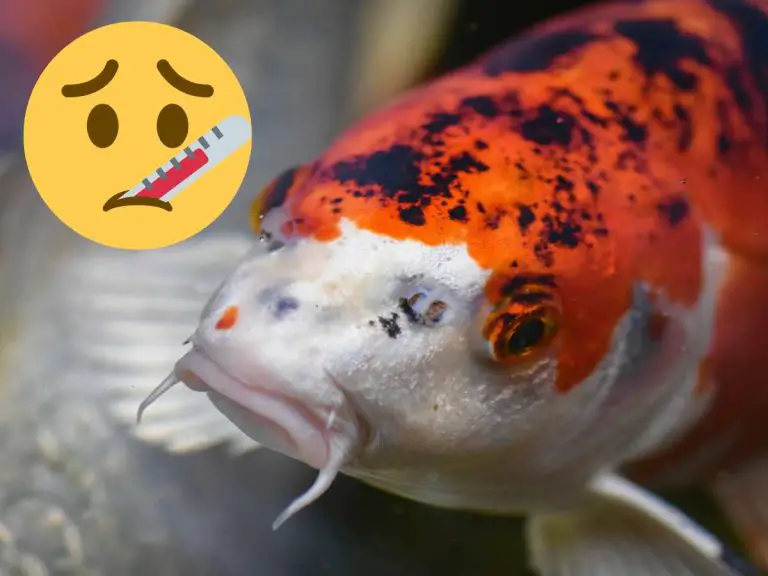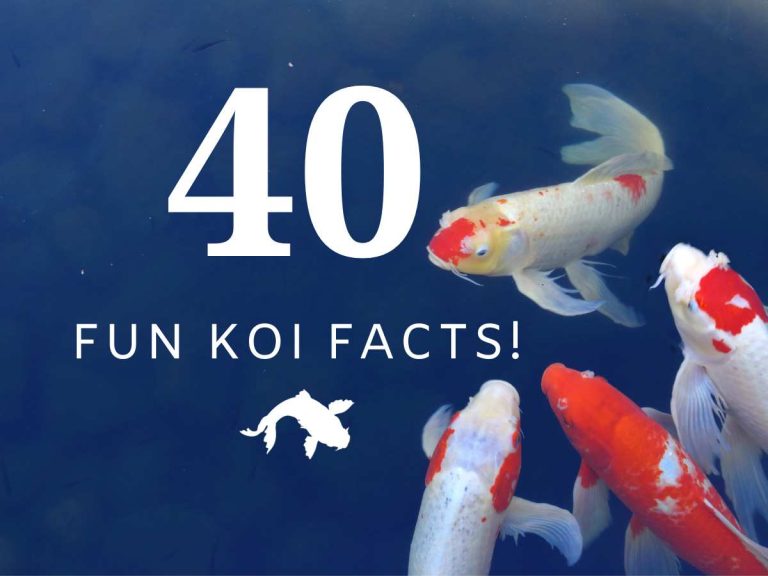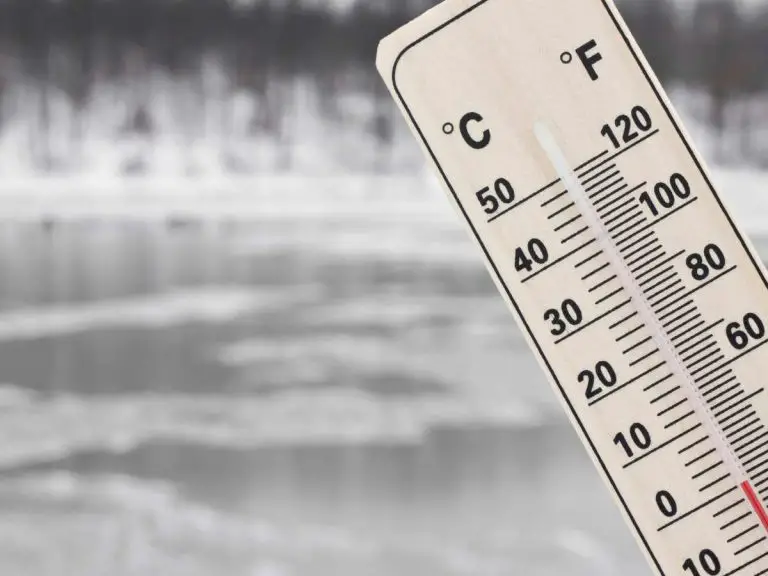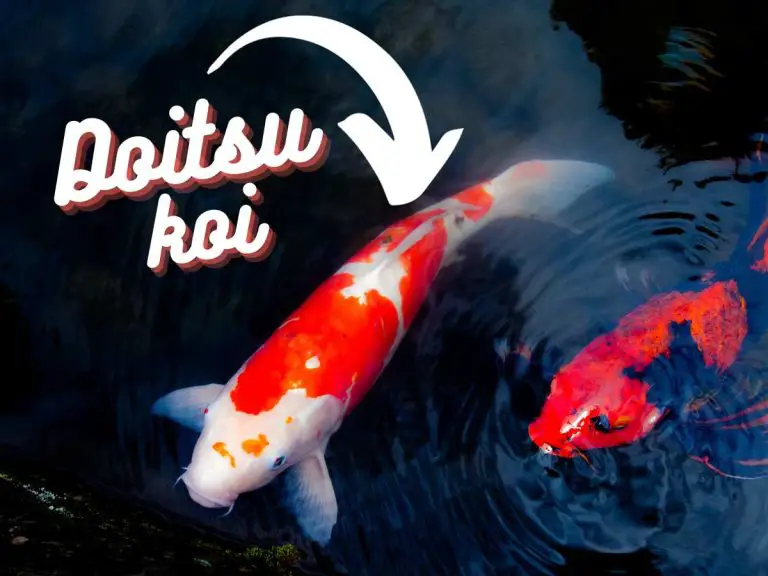Treat Dropsy in Koi Carp: Complete Guide To Heal Your Fish
Dropsy is a serious condition that affects koi carp and can lead to death if left untreated. It’s characterized by swelling of the fish’s body, accompanied by pinecone-like protrusions. The main objective of this article is to provide you with a comprehensive guide on how to treat dropsy in koi carp, as well as tips on preventing it from occurring in the first place.
So if you’re looking to keep your koi carp healthy and happy, keep reading! Our guide will cover everything from understanding the symptoms of dropsy to providing natural and surgical treatments for your fish. Whether you’re a first-time koi fish owner or a seasoned enthusiast, this article is a must-read for anyone looking to keep their fish in tip-top condition.
Can koi fish get dropsy?
Yes – koi carp can and do get dropsy. Thi is a condition that affects the kidneys of fish (koi included), leading to a buildup of fluids in the fish’s body. This results in the fish’s scales and belly appearing bloated or swollen.
Dropsy is not something to be taken lightly. If you suspect your koi may be suffering from dropsy, act quickly, and seek veterinary support as needed.
What causes dropsy?
While several factors can cause dropsy in koi fish, the most common is poor water quality. This can occur when the water in the koi pond or tank is contaminated with harmful substances such as nitrates, ammonia, and nitrites.
Other causes include parasitic infections, bacterial infections, or viral infections. Certain medications or poor feeding habits can also cause dropsy in koi carp.
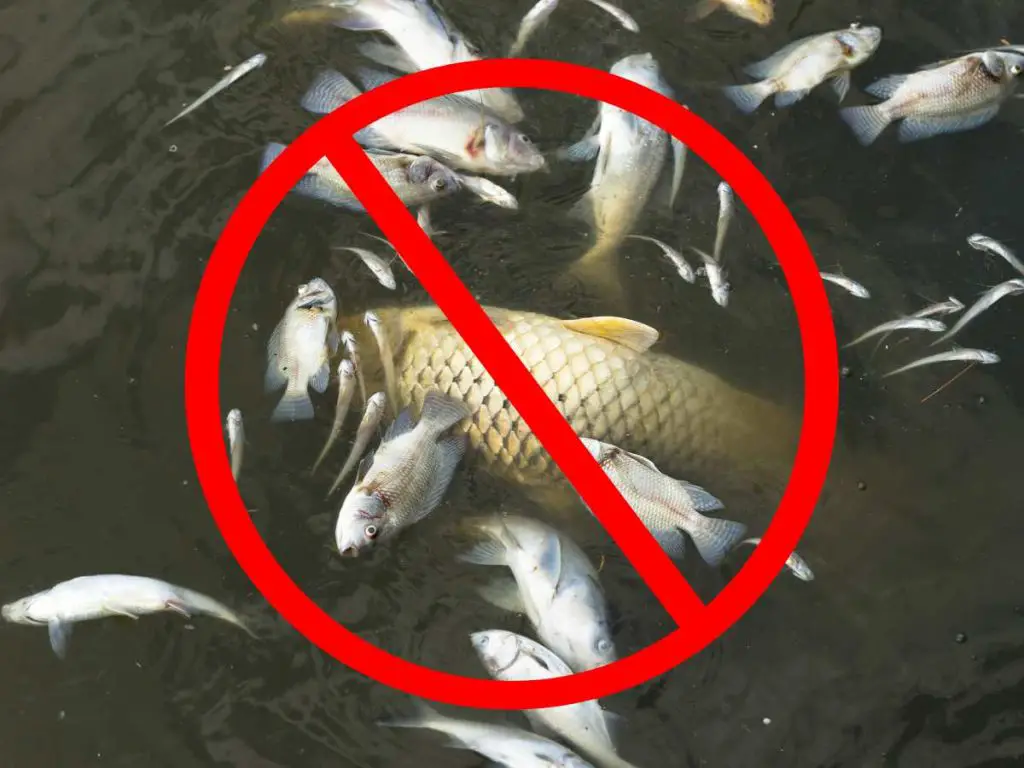
Signs and symptoms of dropsy in koi carp
One of the easiest ways to identify dropsy is by looking at the fish’s appearance. A fish with dropsy often has a bloated or swollen belly, and its scales may appear raised or pinecone-like.
Other symptoms include lethargy, loss of appetite, and a general lack of energy.
You may also notice that the fish is hanging near the bottom of the pond or tank and gasping for air frequently.
How to treat dropsy in koi ponds
To begin dropsy fish treatment, first, examine the fish for physical signs of dropsy. A fish with dropsy will have a swollen belly or raised scales.
Testing water quality can also help you pinpoint the cause of the fish’s illness. It is essential to use high-quality test kits that can detect nitrates, ammonia, and nitrites accurately.
Remember, too, that secondary infections are a common complication of dropsy and must be identified and treated promptly to prevent further complications.
Before you can properly treat dropsy in koi fish, you must diagnose it correctly. Here are some diagnostic measures to take:
Examining your fish for dropsy
The first step in diagnosing dropsy is examining your fish for any signs and symptoms. Dropsy is characterized by a bloated appearance, with swelling in the body and scales that stick out. Their eyes and gills may also be swollen. If you notice any of these signs, it’s important to act quickly.
Testing water quality
Poor water quality is one of the primary causes of dropsy, so it’s important to test your tank’s water quality. Ammonia and nitrate levels can be especially harmful to your fish, and high levels of these can lead to the onset of dropsy. Regular water changes, live plants, and proper filtration are essential in maintaining a safe and healthy environment for your koi.
Identifying secondary infections
Dropsy can often be a secondary infection, meaning it’s a symptom of a larger problem. Common secondary infections include bacterial infections, parasites, or fungal infections. If you notice any symptoms of these infections, such as white spots on skin or fins, frayed fins, or lethargy, you should address them promptly to prevent the onset of dropsy.
Preventing dropsy in koi carp
Prevention is key when it comes to dropsy in koi fish.
The first step to preventing dropsy is maintaining a clean and healthy environment for your koi. It’s basically all the stuff you should already be doing anyway.
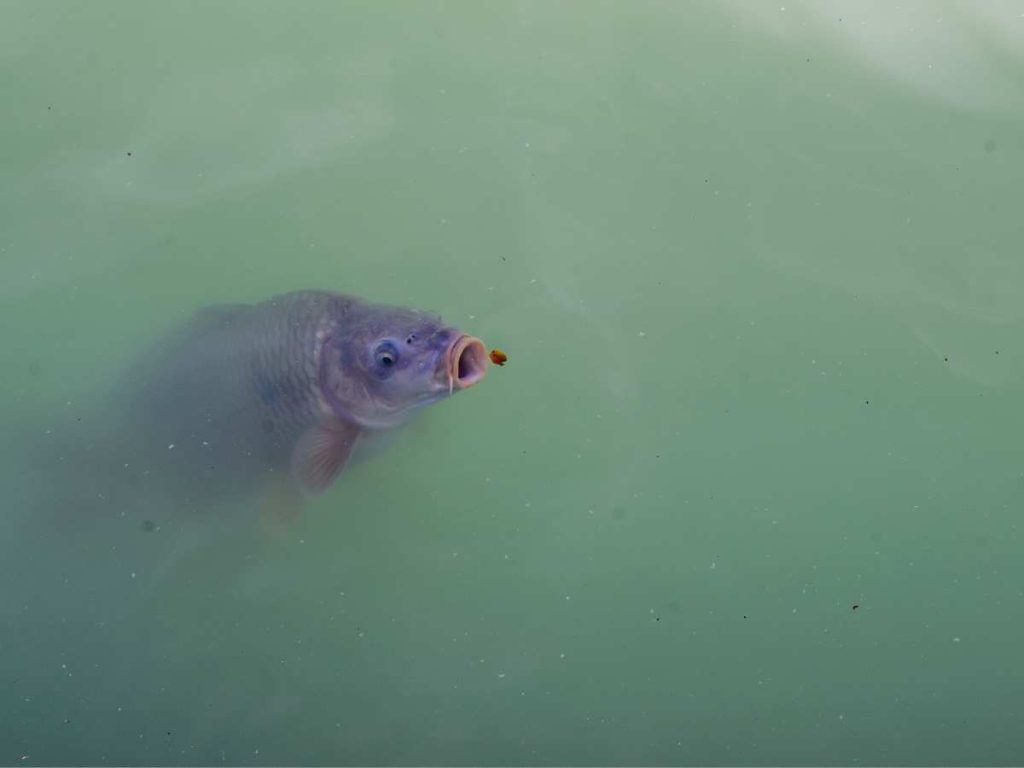
Make sure to regularly clean your tank or pond and remove any debris or waste. Perform water changes frequently and ensure that the water quality is optimal. Test the pH, ammonia, nitrate, and nitrite levels regularly and adjust as necessary.
Investing in a good water filtration system can also greatly improve the water quality.
Related: why is your koi pond foamy?
Identifying and treating other illnesses promptly
Other illnesses such as bacterial infections, parasitic infestations, and fungal outbreaks can weaken your koi’s immune system and make them more susceptible to dropsy. Therefore, it is crucial to monitor your fish for any signs of illness and treat them promptly. Early detection and treatment can greatly reduce the risk of dropsy occurring.
We’ll cover more about how and when to seek out veterinary advice for fish illnesses below.
Maintaining a balanced diet
A balanced and nutritious diet is essential for keeping koi healthy and preventing dropsy. Make sure to feed them a varied diet that includes both commercial fish food and fresh vegetables such as lettuce and spinach. Avoid overfeeding your fish and ensure that the amount of food you give them is appropriate for their size and activity level.
By following these preventive measures, you can greatly reduce the risk of your koi developing dropsy. However, if your fish does show signs of dropsy, prompt treatment is necessary to prevent the condition from worsening.
Dropsy fish treatment options
Dropsy in koi carp can be a serious condition requiring swift treatment. Thankfully, there are a variety of methods for treating dropsy in koi fish.
Salt baths and dips
One of the most well-known remedies for dropsy in koi carp is salt baths or dips. This method involves placing the affected fish in a saltwater solution for a period of time. The salt can help to reduce swelling and ease the pressure on the fish’s internal organs. It’s important to note that this method should only be used in moderation, as too much salt can be harmful to your fish.
Antibiotics
If your koi carp is suffering from a secondary bacterial infection, it may be necessary to use antibiotics to treat the underlying cause of the disease. Your veterinarian will be able to prescribe the appropriate medication and dosage for your fish. It’s important to follow the instructions carefully and complete the entire course of antibiotics, even if your fish appears to be improving.
Surgery
In some cases, surgery may be necessary to treat dropsy in koi fish. This is typically reserved for severe cases in which the fish’s internal organs are experiencing significant pressure and damage. Your veterinarian will be able to advise you on whether surgery is a viable option for your fish, and will perform the surgery if necessary.
It’s important to note that surgery is a serious procedure that carries risks, and should only be considered as a last resort.
Supporting your koi carp’s recovery
After diagnosing and treating your koi carp for dropsy, you’ll need to support their recovery to prevent any relapse. The following are some strategies to ensure your fish recovers and regains its strength after experiencing dropsy:
Optimal tank conditions for recovery
One of the most critical factors in ensuring your koi carp recovers from dropsy is their living conditions. Tank maintenance and hygiene are key.
Ensure your pond is clean, free of waste, and debris to maintain high water quality, which will enable efficient filtration and oxygenation. Your fish needs adequate oxygen levels to heal and fight off any secondary infections that may arise.
Avoid overcrowding your pond to keep your fish stress-free, too.
Diet and nutrition for recovery
Your koi carp will need a well-balanced diet to support their recovery from dropsy. A proper diet will boost their immune system and aid in the healing process.
Give them a high-quality koi food, which will provide the necessary nutrients and vitamins to promote healing. Include vitamin C supplements in their diet to reduce inflammation and improve immunity.
Offer small amounts of food daily to avoid overfeeding, which can lead to waste buildup and poor water quality.
Of course, your vet should be able to help you come up with the right diet for your koi’s unique needs during recovery.
Managing stress levels during recovery
Koi carp can easily become stressed, especially after experiencing an illness such as dropsy. So you’ll want to reduce stress levels to support a quick recovery.
Avoid adding new fish to the pond and limit human and animal interaction with your fish.
Ensure the water temperature is stable, and there are no sudden fluctuations, which may cause stress to the fish. Finally, keep the environment as serene as possible by avoiding loud noises as much as possible.
By following these strategies, you will support your koi carp in their recovery journey and prevent a relapse of dropsy. That said, it’s essential to seek a veterinarian’s assistance if you notice any unusual symptoms or behaviors in your fish, even after successful treatment of dropsy.
The Role of a Veterinarian in Dropsy Fish Treatment
The well-being of your koi carp should be of utmost importance, and when it comes to dropsy treatment, sometimes seeking the assistance of a veterinarian is necessary. In this section, we’ll cover when to seek veterinary care, how to find a qualified aquatic veterinarian, and the benefits of working with a veterinarian for treatment and recovery.
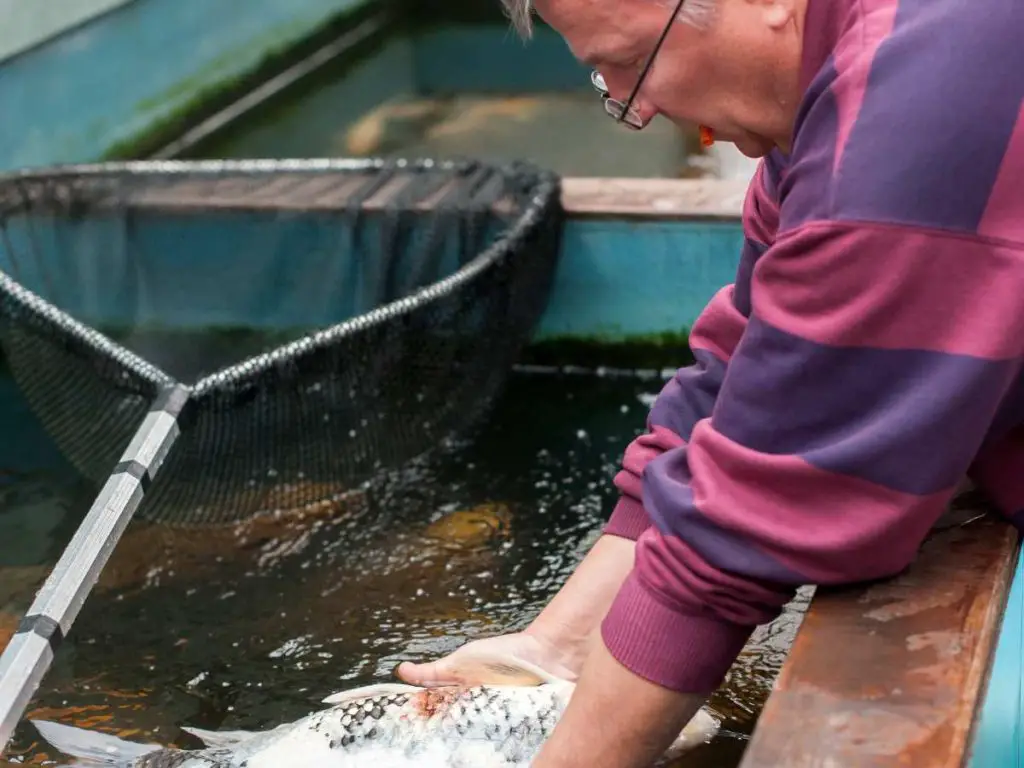
When to Seek Veterinary Care
It’s essential to recognize that dropsy can be caused by various underlying issues, including bacterial infections, environmental factors, or parasites. Some of the signs that may indicate dropsy but can actually be a different ailment include lethargy, loss of appetite, and difficulty swimming. If your koi carp displays any of these symptoms, it’s critical to take them to a veterinarian who specializes in aquatic medicine.
Finding a Qualified Aquatic Veterinarian
Finding a veterinarian who is experienced in treating koi carp can be challenging, but it’s crucial to do your research and find one with a history of successful treatment outcomes. You can ask your local fish store or koi association for recommendations or search for a veterinary clinic that specializes in aquatic animals online. Look for a veterinarian who has experience with treating koi carp and recognizable credentials.
Working with a Veterinarian for Treatment and Recovery
Working with a veterinarian is an excellent way to ensure you are providing your koi carp with the best possible treatment and recovery plan. A veterinarian will conduct a thorough examination of your fish and diagnose what may have caused dropsy, prescribe medications or surgical intervention when necessary, and help you design a comprehensive recovery plan. Treatment may involve antibiotics, fish surgery, and monitoring the water’s quality and adding necessary medications or supplements.
Preventing and Treating Dropsy in Koi: Key Takeaways
Thanks for reading this article on how to prevent and treat dropsy in koi carp. Here’s a quick reminder of the main points we’ve covered:
- Dropsy is a serious health issue that affects koi fish
- Proper tank management, balanced diet, and regular check-ups can help prevent dropsy
- Early detection and prompt treatment are crucial for recovery
- Treatment options include salt baths, antibiotics, and surgery
- Supporting recovery with optimal tank conditions and nutrition
- Consulting with a qualified aquatic veterinarian for more serious cases.
By maintaining good tank conditions, proper nutrition, and catching any issues early on, you can help prevent dropsy from taking hold in the first place. By following the tips and advice shared in this article, you can help keep your koi healthy and happy for years to come!
Related Questions
Can dropsy be contagious among koi carp?
There is no evidence to suggest that dropsy in koi carp is contagious among fish. However, poor water quality and unsanitary tank conditions can increase the risk of dropsy and other illnesses. It is important to maintain a clean and healthy environment for your koi carp.
How long does it take for koi carp to recover from dropsy?
The recovery time for dropsy in koi carp can vary depending on the severity of the condition and the treatment method used. With prompt and proper treatment, some koi carp may recover within a few weeks. It is important to continue monitoring and caring for your fish to ensure a full and healthy recovery.

